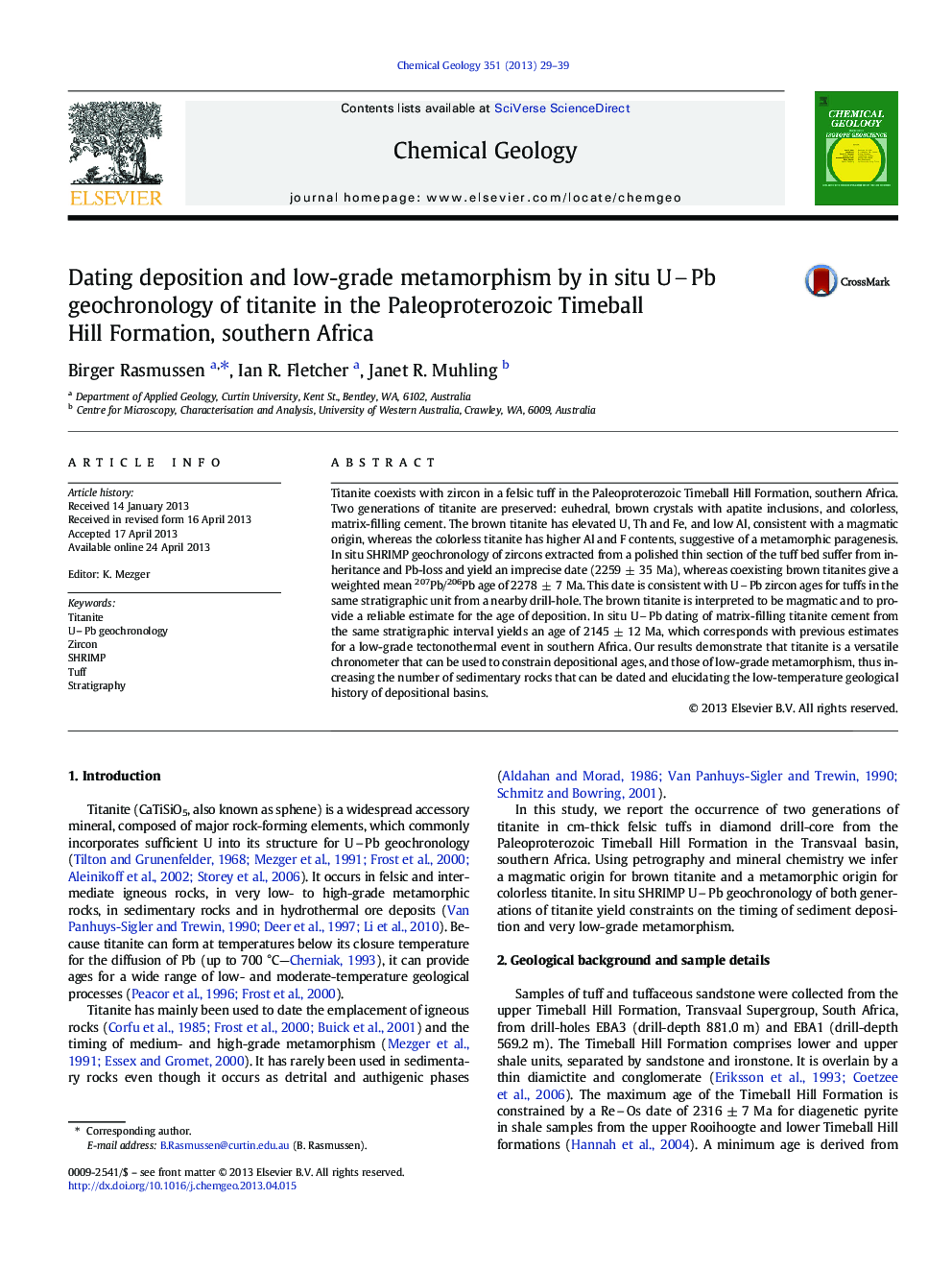| کد مقاله | کد نشریه | سال انتشار | مقاله انگلیسی | نسخه تمام متن |
|---|---|---|---|---|
| 6436896 | 1637618 | 2013 | 11 صفحه PDF | دانلود رایگان |

- We show that titanite can be used to date low-grade metamorphism.
- Dating titanite in tuff beds can also constrain the age of sediment deposition.
- Mineral chemistry can be used to distinguish magmatic from metamorphic titanite.
- Titanite is a versatile geochronometer that can be used to date sedimentary rocks.
- Titanite will become increasingly important for dating low-temperature processes.
Titanite coexists with zircon in a felsic tuff in the Paleoproterozoic Timeball Hill Formation, southern Africa. Two generations of titanite are preserved: euhedral, brown crystals with apatite inclusions, and colorless, matrix-filling cement. The brown titanite has elevated U, Th and Fe, and low Al, consistent with a magmatic origin, whereas the colorless titanite has higher Al and F contents, suggestive of a metamorphic paragenesis. In situ SHRIMP geochronology of zircons extracted from a polished thin section of the tuff bed suffer from inheritance and Pb-loss and yield an imprecise date (2259 ± 35 Ma), whereas coexisting brown titanites give a weighted mean 207Pb/206Pb age of 2278 ± 7 Ma. This date is consistent with UPb zircon ages for tuffs in the same stratigraphic unit from a nearby drill-hole. The brown titanite is interpreted to be magmatic and to provide a reliable estimate for the age of deposition. In situ UPb dating of matrix-filling titanite cement from the same stratigraphic interval yields an age of 2145 ± 12 Ma, which corresponds with previous estimates for a low-grade tectonothermal event in southern Africa. Our results demonstrate that titanite is a versatile chronometer that can be used to constrain depositional ages, and those of low-grade metamorphism, thus increasing the number of sedimentary rocks that can be dated and elucidating the low-temperature geological history of depositional basins.
Journal: Chemical Geology - Volume 351, 2 August 2013, Pages 29-39